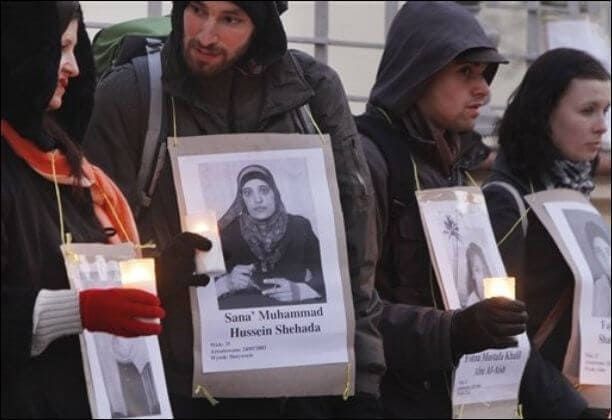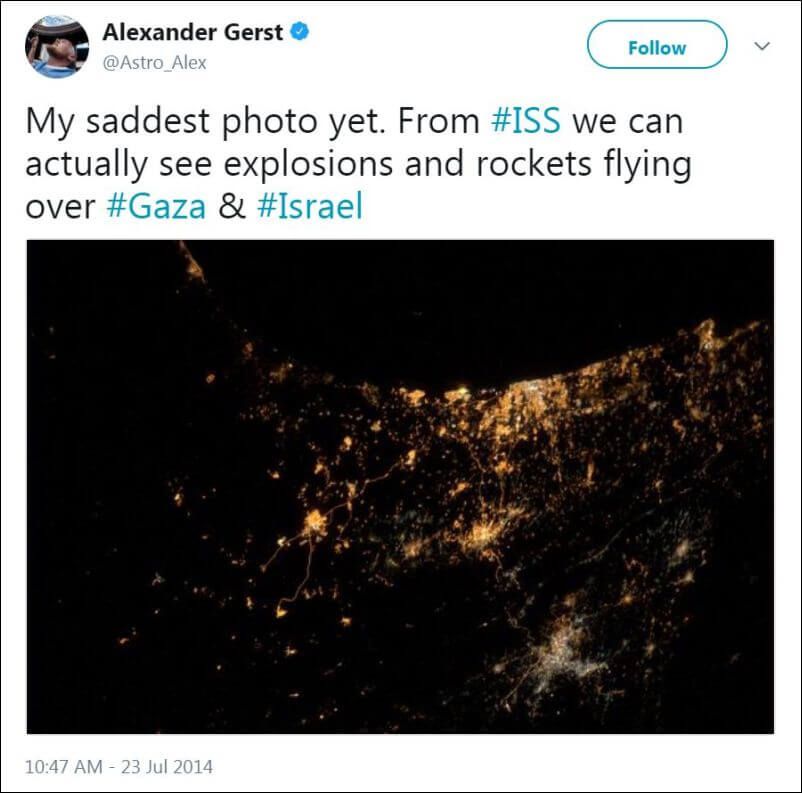Part seven of an eight-part series explaining The 8 Categories of Media Bias.
Violation #7
Distortion of Facts
Getting the facts wrong.
Thanks to today’s technology, anyone from a professional journalist to an amateur passerby with a smart phone can instantly post breaking news online. But in the rush to be first, fact-checking often gets short shrift.
Another reason for the decline in substantiating info is the rise of what’s called “the journalism of assertion.” That’s the idea that reporters can ease up on independent verification if the information can be attributed to someone — anyone — whether it’s an eyewitness, a government official, or even a report published in a different newspaper. Again, it comes back to the 24-hour news cycle — there isn’t time to double check the facts.
Watch Haviv Rettig Gur of the Times of Israel, and Michelle Chabin of USA Today and other papers discuss with HonestReporting the problem of journalists distorting facts.
Well-meaning eyewitnesses who talk to reporters can have faulty memories, erroneous information, or an incomplete understanding of what they’re talking about. And anyone with an agenda can mislead a journalist by not painting a full picture of what they know, or by telling outright lies. For all these reasons, journalists are expected to take fact-checking seriously.
Many do.
Unfortunately, some reporters aren’t rigorous enough, and others are downright sloppy.
To err is human. That’s why papers publish corrections. But reporters abdicate the discipline of independent verification when, for example, they
- Fail to vet sources.
- Fail to do their own independent fact-checking.
- Assume at face-value that other media reports are accurate.
- Embellish details or make up facts.
- Mistranslate words.
- Misquote sources, or misattribute quotes.
- Digitally alter photographs or videos.
Examples run the gamut of news, photos, op-eds, and social media.
Since this was first published, new examples have been added.

EXAMPLE: The Associated Press failing to fact-check claims that “The Innocence of Muslims” — an inflammatory video against Islam which triggered deadly riots in the Arab world — was produced by an Israeli identified as “Sam Bacile” and funded by other Israelis.
Doing his own independent research, reporter Jeffrey Goldberg discovered that there was no Israeli connection to the film, which was actually produced by the Egyptian-born Nakoula Basseley Nakoula.
EXAMPLE: During a period of Jerusalem tensions over the Temple Mount, Jim Hollander of the European Pressphoto Agency lined up a photograph that appeared to show an Israeli flag provocatively flying from the Dome of the Rock.
Although Hollander’s original caption mentioned that the flag was actually flying in the background, this detail was omitted from news sites such as the Los Angeles Times and BBC.
After concerned readers contacted those news services, the Times updated the caption, while the BBC removed the photo, saying “We realised quickly that the picture could be misunderstood and misrepresented, and given the sensitive nature of the story, we updated it with a different picture.”

EXAMPLE: Journalist Don Melvin of CNN reporting that Israeli settlers had chopped down 800 Palestinian olive trees. His report was based solely on a report by the official PA news agency, WAFA, which attributed the claim to an anonymous source. Melvin’s story isn’t credible for two reasons:
- It takes a long time to chop down 800 trees, ample time for reporters to see for themselves and/or find corroborating eyewitnesses.
- WAFA is directly managed by Mahmoud Abbas’ office. For a sense of its journalistic standards, it labeled the 2014 Jerusalem synagogue terrorists as “Islamic martyrs.”
EXAMPLE: In a 2015 documentary, Children of the Gaza War, the BBC and its translators made a judgment call that whenever a Palestinian kid said Yahud (Jew), the word would be translated as Israeli. This deliberate mistranslation downplayed the fact that Palestinians have been indoctrinated with the hatred of Jews, not just Israelis. (The Arabic word for Israeli is Yisraili.)
EXAMPLE: An Associated Press photo caption of a 2011 Palestinian solidarity rally in Warsaw. The demonstrators held placards of “political prisoners” held by Israel. The woman on the featured placard, Sana Muhammad Hussein Shehada – is serving three life sentences for transporting a suicide bomber to Jerusalem in March, 2002. The attack she facilitated killed three people and injured some 40 more.
But AP’s caption unquestioningly labeled Shehada as a political prisoner.

EXAMPLE: One Boston Globe op-ed is an excellent case study in the need for fact checking opinion pieces too. In 2008, Eyad al-Sarraj and Sara Roy argued against what they called the Israeli “stranglehold” on Gaza. They offered this “fact” as proof:
Although Gaza daily requires 680,000 tons of flour to feed its population, Israel had cut this to 90 tons per day by November 2007, a reduction of 99 percent.
This “fact” was called out by Professor Martin Kramer:
You don’t need to be a math genius to figure out that if Gaza has a population of 1.5 million, as the authors also note, then 680,000 tons of flour a day come out to almost half a ton of flour per Gazan, per day.
The Globe issued a correction, saying the authors meant to write pounds instead of tons, but Kramer didn’t buy it.
Measuring the flour needs of Gaza in pounds is like measuring the distance from Boston to New York in yards. The UN, Palestinian ministries, and aid agencies all use tons. The pounds-for-tons “correction” is an attempt to cover up the authors’ original sin: they just copied the figure straight from the Ahram Weekly (which anyway doesn’t use pounds—it uses metric measurements). The Boston Globe should go back to the authors and ask for the precise source of their figures. It’s called fact-checking.
EXAMPLE: When Gaza was flooded by winter rains in February, 2015, papers such as the Daily Mail reported that the floods were the result of Israel opening dams. It was based on claims made by Hamas. In fact, there are no dams in southern Israel.
EXAMPLE:A Turkish reporter who admitted fabricating a Jared Kushner quote praising Turkish President Recep Tayyip Erdogan
EXAMPLE: A German astronaut’s viral photo of Gaza in July, 2014, purported to show explosions over Israel and Gaza during Operation Protective Edge. The image was featured on NASA’s web site and newspapers around the world. But it was demonstrated that the photo was simply Israel at night.
Other examples: A discredited Rolling Stone cover story on campus rape, former New York Times reporter Jayson Blair who fabricated and plagiarized numerous stories, Dan Rather‘s failure to authenticate documents in the “Memogate” affair, NBC News suspending anchor Brian Williams for embellishing war stories, doctored photos of a BP cleanup command center in 2010, Reuters retracting doctored images of Beirut during the 2006 war in Lebanon, and a Saudi prince winning damages from The Independent after being libeled by columnist Robert Fisk. Journalists frequently fooled by fake news sites and unconfirmed viral tweets — such as one claiming that the Golden State Warriors unanimously turned down an invitation to visit President Donald Trump in the White House when A) no invitation had been issued, and B) the players would only decide when one was offered.
A suspected Russian disinformation campaign interfering with Swedish public debate by spreading distorted and false information on social media to confuse public discourse on whether the Scandinavian country should join NATO.
Brazilian “surfing war photographer” Eduardo Martins, who was caught altering images of other war photographers and passing them off as his own.
See also a praiseworthy editor’s note at the bottom of NPR’s breaking coverage of the Orlando night club massacre acknowledging that “Some things that get reported by the media will later turn out to be wrong,” and the response it provoked from other journalists.
Click to learn more about each individual category.
The 8 Violations of Media Objectivity
- Misleading definitions: Prejudicing readers through language.
- Imbalanced reporting: Distorting news through disproportionate coverage.
- Opinions disguised as news: Inappropriately injecting opinion or interpretation into coverage.
- Lack of context: Withholding a frame of reference for readers.
- Selective omission: Reporting certain events over others, or withholding key details.
- Using true facts to draw false conclusions: Infecting news with flawed logic.
- Distortion of facts: Getting the facts wrong.
- Lack of transparency: Failing to be open and accountable to readers.
See also the introduction to this series and some final thoughts and acknowledgements, wrapping the concepts together and raising awareness for news literacy.
“Red Lines: The Eight Categories of Media Bias,” is available on Amazon for purchase as an e-book.
Before you comment on this article, please remind yourself of our Comments Policy. Any comments deemed to be in breach of the policy will be removed at the editor’s discretion.



